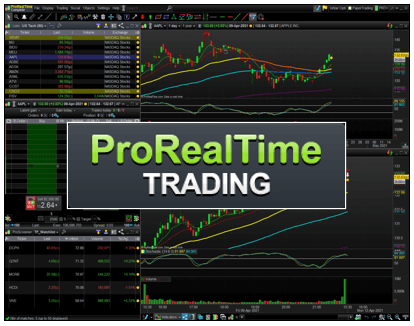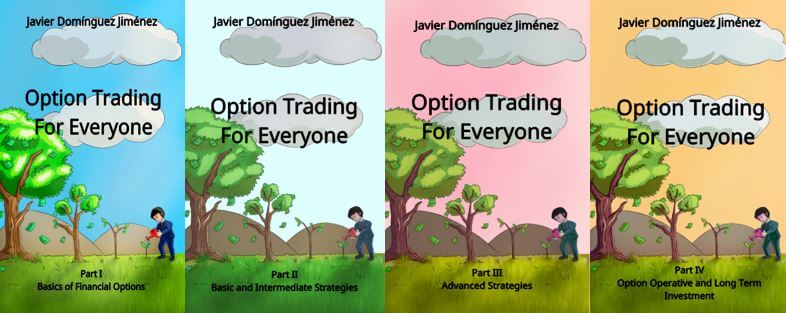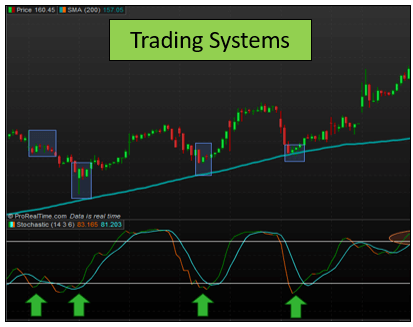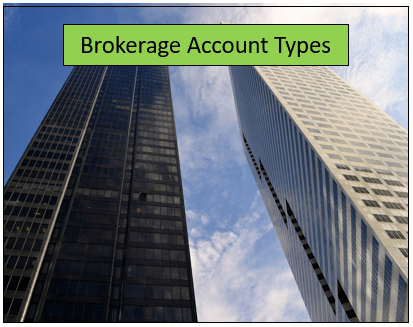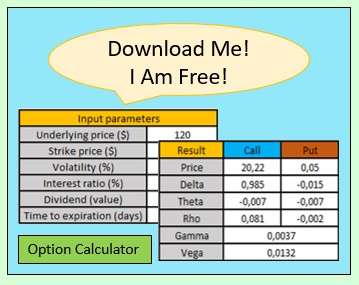Market Order Types – Listing The Most Important Stock Market Orders We Will Find
We can find many different market order types in our brokerage account when trading in the stock market. In some cases, some brokers may have more orders than others, but in the end, they are all based on the same basic market order types.
In this article, we are going to be listing and reviewing the most important market order types that we will encounter in every single broker account, and we will explain why it is better to use some over others in each scenario.
Let us begin!
Table of Contents
Understanding how orders are issued: Using the stock market order book
First of all, we need to know how every single long and short position is opened and executed because this is essential to understand why there are different market order types and their importance.
The key concept here is the stock market order book, which is the place where all the stock market orders are filled and executed.
The stock market order book is a queue that will be executing the orders from the buyers and from the sellers in order of priority.
The order book will show every order active in the market, including valuable information such as the number of shares and their issued price.
The stock market order book aims to provide all the information about every order issued in the market, so we can read it to learn which is the overall intention of the traders and investors.
How to read the stock market order book
Let us take a deep look at the stock market order book using the ProRealTime trading platform to understand it in a practical way.
As you can see, the stock market order book shows us quite a lot of information.
The three left columns display the buy zone of the order book. In them, we will be able to see our order, the number of shares issued in the market, and the price at which they are stated.
The three columns at the right represent our selling order, the selling orders of other traders, and the number of shares included in them.
The central column shows us the prices of the stock.
The rows of the book order show us the priority of the orders. These are marked with a white horizontal line.
Those white horizontal lines from the buying zone will show us the best price (also called bid price) at which we can sell shares. While those horizontal lines that come from the selling zone will show us the best price (also called ask price) at which we can buy shares.
The differences between the white lines are what we call spread, and the higher it is, the more difficult it will be to make profits in the stock.
That is how we read the stock market order book. Let us now take a look at the different orders we may find and how they are placed in the order book.
The two main stock market order types
We can classify the market order types in two categories attending their quality: at market order and limit order.
Using at market order
When we issue a market order to the order book, what we are doing is to buy or to sell at whatever price we may encounter in the book.
For example, in the following order book, a buy at market order example would buy us the Nasdaq ETF shares, QQQ, at 319.77$.
In that case, we would obtain the exact number of shares we indicated in our order, but the price might change depending on the spread of the stock.
A sell at market order example would short sell the QQQ for the number of shares we specify but at the price of 391.73$, according to the bid price.
In other words, a buy at market or a sell at market order will put quantity before quality, as we will surely execute our order but not at the price that we might want.
The market order works well in stocks whose spreads are quite tight, as we will enter and exit trades without much problem. However, this alternative might not be the best in some cases. That is the reason why we can also use a limit order.
Do you need a fast Stock Trading Journal that helps you make better decisions?In this short video, we will show you how to know in detail the results of your trading, how to get an estimate of the number of stocks to trade based on risk, and how to drastically reduce the time it takes to record your trades with this Journal |
Using the stock limit order
When we issue a buy limit order or a sell limit order, we prioritize buying or selling at the price we have specified over the number of shares that we may acquire in the order.
For example, for the following stock market order book, a buy limit order example could be to buy 4 shares at the price of 319.76$.
Our buy limit order will not be executed until we find a counterpart order that wants to sell shares at the same price we have issued.
That is most likely to happen when the prices of the stock get closer to our limit order.
In some cases, we may not need to wait for the price to be equal to our limit order price because other traders might want to exit their position and may use a market order that can push the prices closer to our order.
Of course, we can place our buy limit order wherever we want, while we do so under the ask price.
It would not make any sense to place a buy limit order over the ask price, because the quotation is under that threshold, and we would be losing money from the start of the trade.
Also, a sell limit order example could be to open our order at 319.90$. Again, we would need to wait for the price to reach that point, but we ensure that we are paying the exact price we want.
Do you need a Calculator that helps you create and analyze any option strategy in record time? |
Market order vs limit order
As you can see, the stock limit order prioritizes quality over quantity while the market order will prioritize quantity over quality. We highly recommend you use a stock limit order when opening and closing a winning trade.
However, what happens when we are not in a winning trade, and we need to close the position immediately? We also have an answer to that…
The Stop loss order
The stop loss order, also called stop market order, is one of the market order types that will be quite useful when things get out of control.
A stop loss order is nothing more than a market order that will be executed when the quotation hits the price we have specified. We could think of the stop loss order as a conditional market order.
Just like the common market orders, we will find both buy stop orders and sell stop orders in the market.
A stop loss order example
To help you visualize a little more how useful it would be to use a stop loss order, we are going to be using some examples. Let us begin with a buy stop order example.
Imagine we want to short sell a bunch of shares using a sell limit order in the market. After waiting for some time, our order is executed, and we are now in an open position. However, while we wait for the prices to go low, we decide to place two orders: a buy stop order above the recent highest high and a buy limit order to collect the gains.
Our buy stop order will be triggered only if the prices manage to hit 14.30$. In that particular case, the broker will be sending a buy at market order to close our trade and avoid more losses in our account.
After that, our position will be closed and we would have registered a limited loss.
The sell stop order works exactly the same, but all the way around, of course.
In some cases, even when the spread is tight, by using a buy stop order or a sell stop order, we might close the trade at a price that might be very far away from what we have planned. That is the disadvantage of using a stock market order.
Of course, there is an alternative to the stop loss order that might be useful in several cases…
What is a stop limit order?
Another way to use the limit orders is by combining them with a stop order in what we call a stop limit order.
A stop limit order is a hybrid that will allow us to exit a trade when things go wrong by setting a price condition, just like the regular stop market order, and adding a certain range to the prices that we are willing to accept.
The stop limit order works like this: when the quotation hits our price condition, the broker will send a limit order to close the trade.
Since the limit order requires a price target to be executed, the stop loss limit order will force us to specify a range between the price condition we chose and a certain price.
The broker will execute the best price possible within the range we have specified, reducing our losses in this scenario.
A stop-limit sell order example
The previous explanation might sound confusing, so we are going to be using a stop-limit sell order in the following japanese candlestick price chart example to help you understand this better.
In this case, we have bought some shares at 14.10$, but this time, instead of using a common stop loss order, we will be using a stop loss limit order.
First of all, we need to specify the price at which we will set our selling condition, which is 13.97$. After that, we need to choose our range, which is set to 13.79$.
This means that if the price falls to 13.97$, the broker will trigger a sell limit order at the best price they can find between the ranges 13.97$ and 13.79$.
As you can see, by using a stop loss limit order, we are reducing our possible losses in case the spread becomes very high.
Stop order vs stop limit order
The main disadvantage of the limit orders is that they offer quality over quantity. That means that if the quotation, for some reason, jumps from 13.97$ to a value under 13.79$, our stop loss limit order WILL NOT BE TRIGGERED.
That could lead to a very dangerous situation because we will no longer control our losses.
It is up to you to decide which one to use, a stop loss order that will surely take you out of the trade or a stop loss limit order that may or may not take you out.
The trailing stop loss order: an alternative way to use a stop loss order
In some brokers, there is another type of stop loss order called the trailing stop loss order.
The trailing stop order will set a common stop loss order at a specific distance we want to give from the current market price or the entry point we established when opening the trade.
The trailing stop loss order is quite useful when facing a clear bullish or bearish trend, as it will be moving alongside the current market price at a distance we specify.
The trailing stop loss order is a moving sell market order or buy market order.
Last words about the market order types and the stock market order book
As we have seen, there are two main market order types, and these are formed by the market order and the limit order.
However, a broker will always offer other variants of the same order that are quite useful to trade, like the stop loss order, the stop loss limit order, or the trailing stop loss order.
It is up to the trader to decide what orders to use. However, here at Warsoption, we tend to use limit orders to open and exit winning trades and stop loss orders to protect our position if things go wrong.

